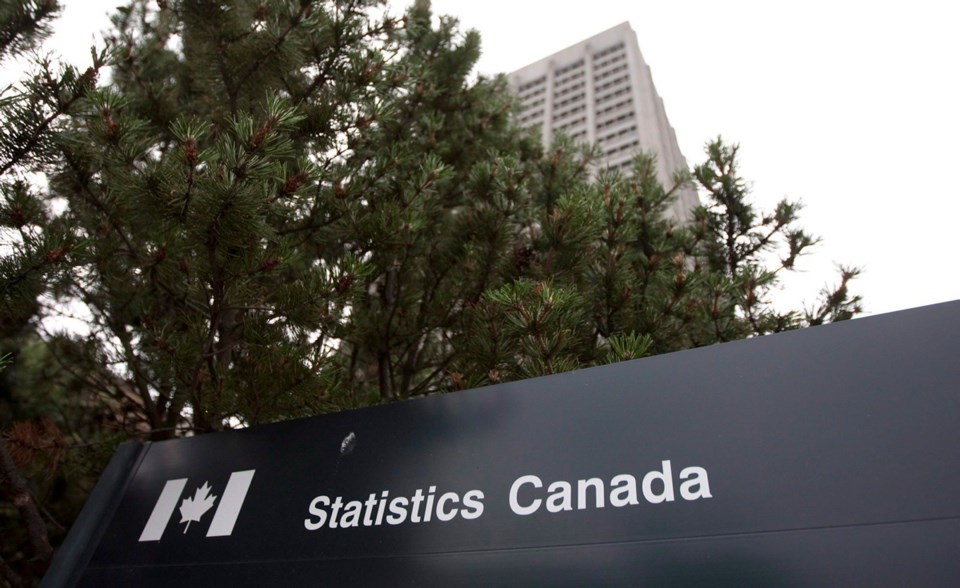Greater Victoria and Quebec City were tied with the lowest unemployment rate in the country at 3.9 per cent in May, below the national rate of 5.8 per cent.
The capital region’s employment numbers climbed by 3,700 in May from April, putting the total number of people working at 199,400, a Statistics Canada official said today as the federal agency released its monthly jobs report.
Local capital region employers are struggling to find entry level to skilled workers in today’s tight job market. The rate in April was 4.2 per cent in Greater Victoria.
Construction companies, for example, are finding it difficult to line up skilled tradesworkers, who are in high demand right now. Some projects in the region have been delayed because of the shortage of workers.
In May, 18,600 people were working in construction, up from 16,700 last year.
Several other Greater Victoria sectors have seen significant job growth in the past 12 months.
Educational services employment numbers climbed to 16,700 year-over-year from 12,900.
Finance, insurance and real estate moved up as well to 12,400 in May from 9,500 last year.
Public administration rose to 21,300 last month from 19,000 in May 2017.
A couple of sectors declined, including accommodation and food services, which went to 12,200 in May from 15,600 a year ago. And the category of business, building and other support services, which includes building management and maintenance, employment agencies and call centres, slid to 6,800 last month from 9,900 in May 2017.
This ultra-tight jobs situation isn’t new. In January, the capital region’s unemployment rate was 3.9 per cent.
Butchart Gardens played it smart first thing in 2018 by announcing a job fair and entry-level wages of $15 an hour in order to lock down workers at the popular attraction. Every year, the gardens on the Saanich Peninsula reach about 550 staff during its extra-busy season.
Nationally, Vancouver is in second place in a three-way tie with Guelph and Ottawa at 4.1 per cent unemployment rate.
Canada’s economy unexpectedly lost jobs for the second month in a row in May, but wages posted their fastest year-over-year increase in nine years, Statistics Canada said.
The economy lost 7,500 jobs in May as a drop in full-time employment was only partially offset by an increase in part-time jobs, while the unemployment rate held steady at 5.8 per cent for the fourth consecutive month.
Economists had expected an increase of 17,500 jobs, according to Thomson Reuters Eikon.
However, average hourly wages, a key indicator watched by the Bank of Canada, increased 3.9 per cent compared with a year ago, the monthly reading’s largest annual increase since April 2009.
Bank of Montreal senior economist Robert Kavcic said the wage growth suggests a strong labour market in Canada and an economy running near potential.
“It reinforces the idea that the labour market is really pushing full employment and tightening up enough to drive wage growth,” he said.
Kavcic said that combined with other recent economic data including a strong trade report this week, the Bank of Montreal is maintaining its forecast for the Bank of Canada to raise its key interest rate in July.
“We think the bank is still good to go,” he said.
The Bank of Canada kept its key interest rate on hold in an announcement last week, but dropped a reference to remaining “cautious’.” Economists interpreted the change as a hawkish signal suggesting that the next interest rate hike may be sooner rather than later.
The central bank has raised its target for the overnight rate three times since last summer and it now stands at 1.25 per cent.
Paul Ferley, assistant chief economist at Royal Bank, said some of the growth in wages reflected minimum wage increases introduced this year in both Ontario and Quebec, but those increases do not explain all of the upward pressure.
“Evidence of labour markets operating slightly beyond capacity with a low unemployment rate and attendant upward pressure on wage growth argue for the Bank of Canada to continue tightening,” Ferley wrote in a brief note to clients.
The overall drop in the number of jobs came as full-time jobs fell by 31,000, offset in part by a gain of 23,600 part-time positions.
The loss of jobs came as the health care and social assistance sector lost 24,000 jobs, while the manufacturing sector lost 18,000. Employment in construction fell by 13,000.
Sectors gaining jobs included the accommodation and food services sector which added 18,000 jobs, helped by growth in British Columbia. The professional, scientific and technical services sector added 17,000 and transportation and warehousing added 12,000.
Regionally, Prince Edward Island added 800 jobs for the month, while employment in B.C. fell by 12,000 for the month.
In Quebec, a drop in full-time work was offset by a gain in part-time to leave the province little changed for the month. Statistics Canada says there was virtually no change in the number of people working in Ontario.
On a year-over-year basis, overall employment was up by 238,000 jobs or 1.3 per cent, due to gains in full-time work.
— with files from The Canadian Press



